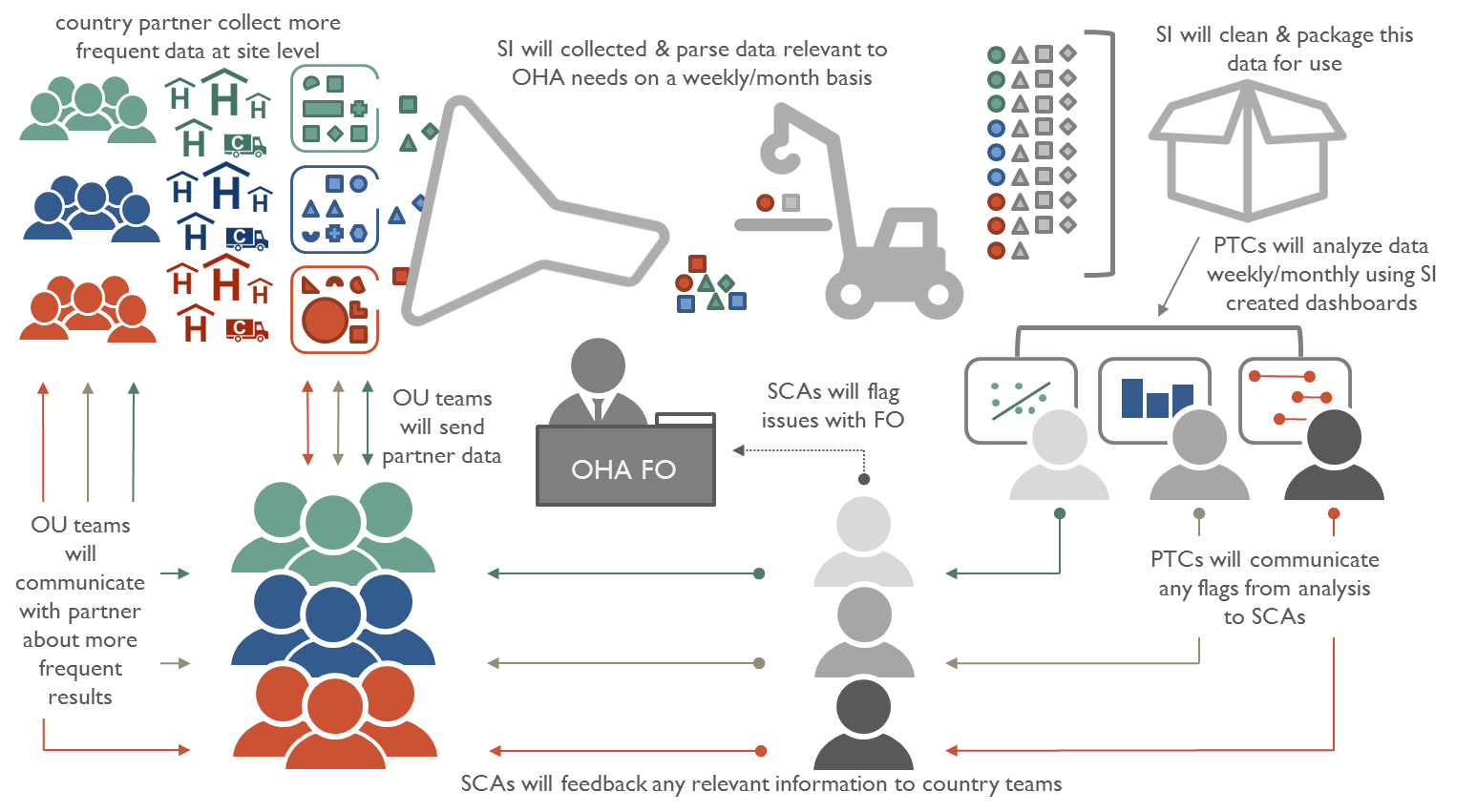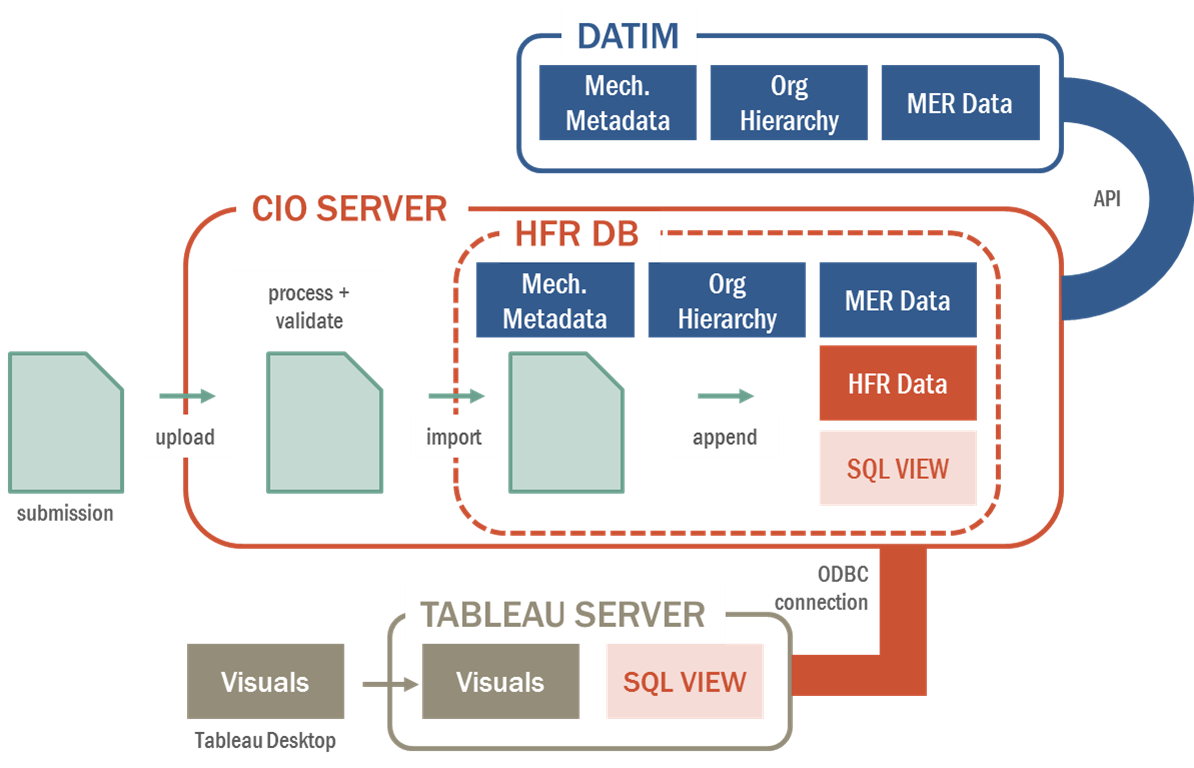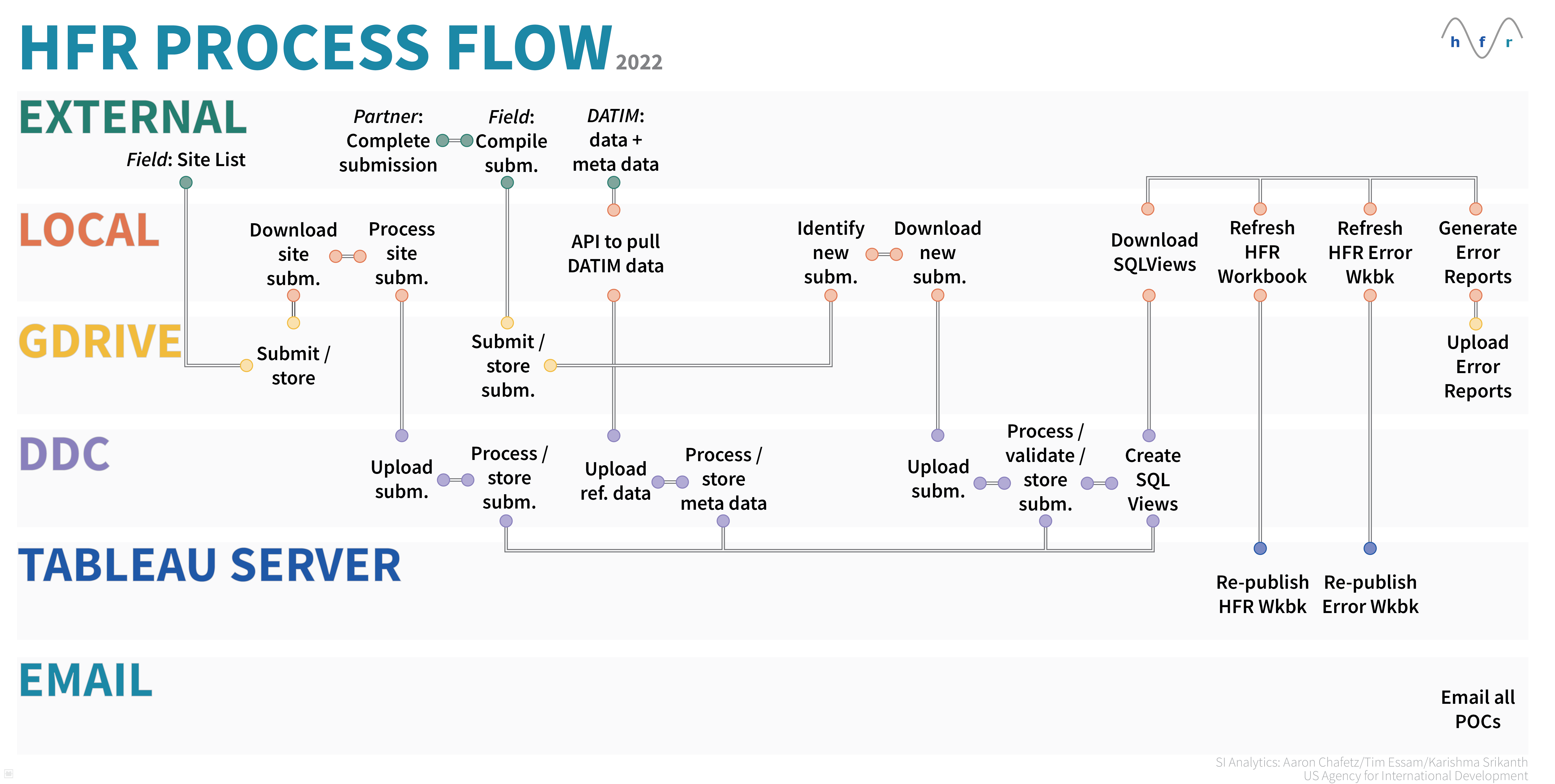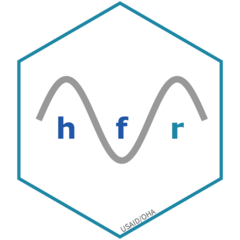High Frequency Reporting
Project Purpose
Envision and design a system to collect, process, and analyze facility-based data from 50 countries datasets on a monthly. High Frequency Reporting (HFR) was intented to be used as an early-warning system that provided important signals about areas that could be changed or adapted to increase impact to achieve targets and results.
Overview
- USAID initiated HFR in 2019 after one Opertiang Unit demonstrated how using weekly site-level data provided an early warning for service delivery course corrections in advance of MER data.
- Within three months, we established the systematic collection and use of these data and worked with OAA to mandate reporting from implementing partners (IPs) based on a subset of MER indicators.
- USAID leveraged HFR to expand multi-month dispencing (MMD), sustaining treatment during the COVID-19 pandemic.
Outcomes
- Designed a standardized Excel based template to collect monthly facility-based data across 50 countries, comprising of more than 10,000 sites and communities
- Designed an R package to valiate and process submitted reports
- Designed APIs to pull in PEPFAR meta data
- Designed Tableau dashboards for monthly tracking
- Generated error reports for users relying on markdown
Lessons Learned
- Worked with M/CIO to white list the Google API
- Deisgned APIs to pull in meta data
- Utilized Google Forms to systematize the collection of files and use automate a data pipeline
- Create a use case/demand for a server to house the HFR data
- Pilot the Development Data Commons, working with an implementing partner and M/CIO to develop a data lake and data enterprise solution
- Importance of feedback and information exchanges from country missions and Washington office leadership
- Establishing use cases and defining success criteria



